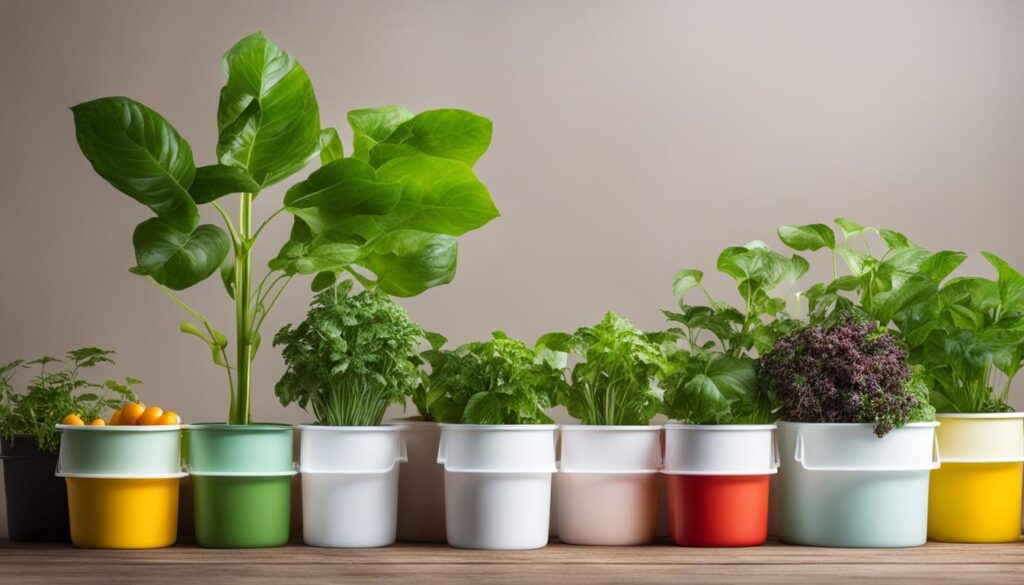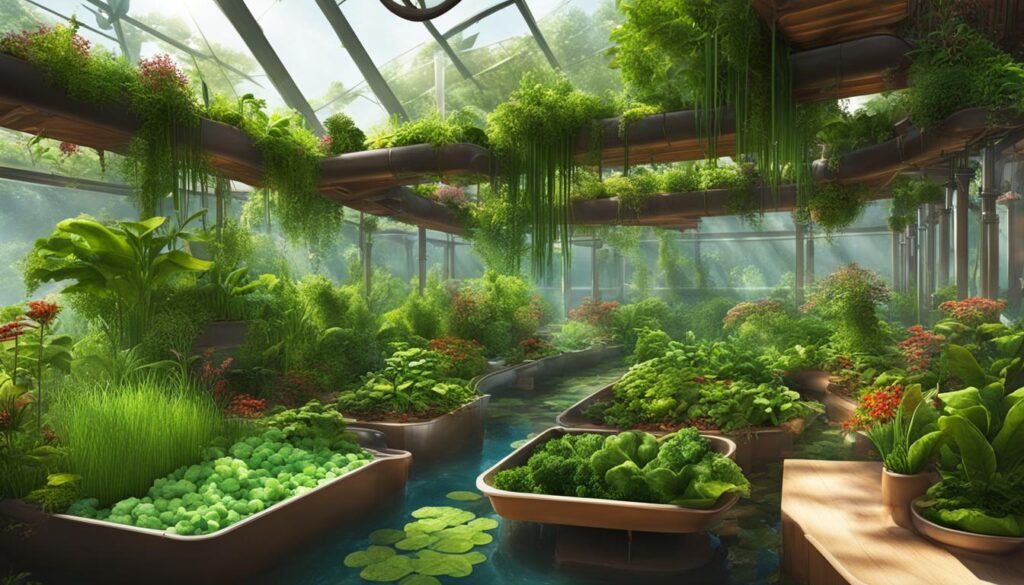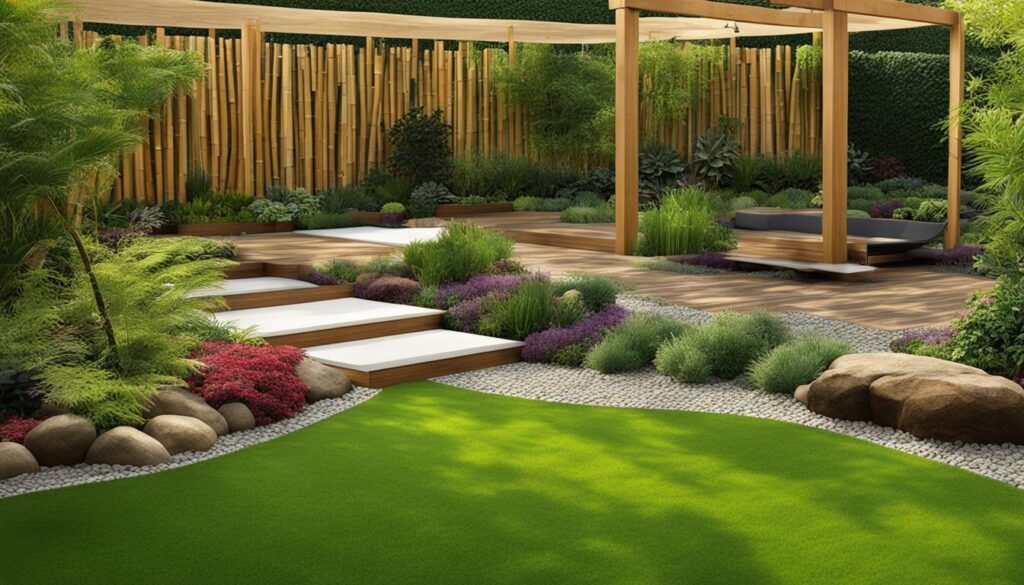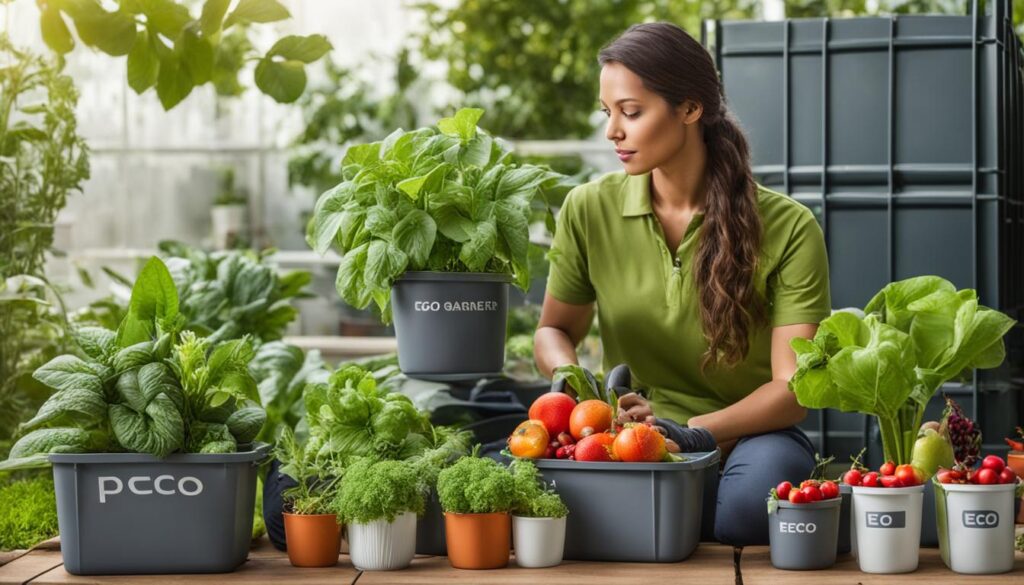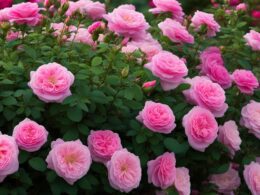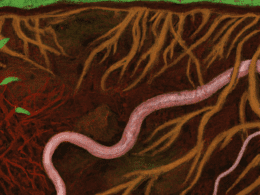In the world of gardening, PVC (Polyvinyl chloride) is a commonly used material for various applications. However, there have been concerns about its safety and potential risks. In this article, we will explore whether PVC is safe for gardening, providing you with factual information from multiple sources to help you make an informed decision about using PVC in your garden.
Post Summary
- PVC is a commonly used material in gardening, but its safety is a topic of concern.
- Food grade plastics, including food safe PVC (uPVC), are deemed safe for contact with food and can be used in gardening.
- Regular PVC, which contains plasticizers, should be avoided for food contact applications.
- PVC can be safely used in aquaponics systems, vertical gardens, hydroponic gardens, and other gardening purposes when using food safe PVC (uPVC).
- Alternative materials like timber, bamboo, clay, cast iron, steel, concrete, and HDPE can be used as safer options for gardening.
Understanding Food Grade Plastic
In the world of plastics, food grade plastic is a term that holds significant importance, especially when it comes to the safety of our food. Food grade plastic refers to any type of plastic that has been approved by the U.S. Food and Drug Administration (FDA) for contact with food. These plastics are deemed to be safe and suitable for use in food packaging, food storage containers, and other applications where they may come into contact with food or beverages.
There are several types of food grade plastics available, each with its own unique properties and applications. One commonly used food grade plastic is PVC, which stands for Polyvinyl chloride. PVC is a versatile plastic that is known for its durability and affordability. It is often used in food packaging, water pipes, and even gardening applications. Other types of food grade plastics include PET (Polyethylene terephthalate), HDPE (High-density polyethylene), LDPE (Low-density polyethylene), PP (Polypropylene), and PS (Polystyrene), as well as other plastics categorized as number 7.
Each type of food grade plastic has its own unique characteristics and applications. For example, PET is commonly used for beverage bottles and food containers due to its transparency and resistance to breaking. HDPE is known for its excellent chemical resistance and is often used for milk jugs and detergent bottles. LDPE is flexible and commonly used for squeezable bottles and plastic bags. PP is known for its high melting point and is used for microwaveable containers. PS is lightweight and commonly used in disposable food service products. Understanding the different types of food grade plastics and their specific properties is important when considering their suitability for different applications.
Types of Food Grade Plastic
| Plastic Type | Common Applications |
|---|---|
| PVC | Food packaging, water pipes, gardening applications |
| PET | Beverage bottles, food containers |
| HDPE | Milk jugs, detergent bottles |
| LDPE | Squeezable bottles, plastic bags |
| PP | Microwaveable containers |
| PS | Disposable food service products |
| Other Plastics (Number 7) | Various applications |
The Difference Between Regular PVC and Food Safe PVC
In gardening, it is important to understand the distinction between regular PVC and food safe PVC, also known as rigid PVC or uPVC. While regular PVC is commonly used for its cost-effectiveness and versatility, it contains plasticizers that make it flexible and softer, but also raise concerns about its safety for food contact. On the other hand, food safe PVC, which is specifically designed for applications involving food, does not contain harmful chemicals like BPA or phthalates.
Food safe PVC, or rigid PVC, is considered safe for gardening and outdoor use. It is widely used in various gardening applications, such as water lines, creating vertical gardens, hydroponic systems, and more. Unlike regular PVC, food safe PVC does not pose the risk of leaching harmful chemicals into the soil or water, making it a reliable option for growing plants and vegetables.
To ensure the safety of your garden, it is crucial to use food safe PVC in any application that involves direct contact with food or beverages. This includes using food safe PVC pipes and fittings for irrigation systems, ensuring that the PVC glue used is food safe, and avoiding direct contact between food and regular PVC. By choosing food safe PVC, you can enjoy the benefits of PVC’s durability and affordability without compromising on the safety of your garden or the quality of your produce.
Using PVC in Aquaponics
When it comes to aquaponics, PVC (Polyvinyl chloride) is a popular choice for building the necessary plumbing and infrastructure. Rigid PVC, also known as uPVC (Unplasticized Polyvinyl chloride), is the preferred type of PVC to use in aquaponics systems. It is food safe and does not contain harmful chemicals such as BPA or phthalates, making it a suitable material for the cultivation of both fish and plants.
Aquaponics is a sustainable farming method that combines aquaculture (raising fish) with hydroponics (growing plants in water) in a symbiotic environment. PVC pipes and fittings are often used to create the plumbing system that connects the fish tanks, filtration systems, and plant beds. The versatility, durability, and affordability of PVC make it an ideal choice for constructing these systems.
One of the key advantages of using PVC in aquaponics is its ability to create vertical systems. Vertical aquaponics allows for efficient space utilization, making it possible to grow a large quantity of plants in a small area. PVC pipes can be used to create vertical towers or columns that support the plant beds, providing a suitable environment for the plants to thrive.
In addition, PVC can be used to separate different species of fish in an aquaponics system. By creating separate compartments using PVC dividers, different fish species can coexist without any risk of interbreeding or aggression. This allows for the cultivation of multiple species of fish simultaneously, expanding the diversity and productivity of the aquaponics system.
Overall, using PVC in aquaponics can provide a cost-effective and practical solution for building the necessary infrastructure. However, it is important to ensure that the PVC used is food safe (uPVC) and does not contain any harmful chemicals. With proper installation and maintenance, PVC can contribute to the success of an aquaponics system, providing a sustainable and efficient way to grow fish and plants together.
Safety of PVC in Gardening
When it comes to using PVC in your garden, safety is a top concern. Luckily, when you use food-safe PVC, also known as uPVC, it can be a safe option for various gardening purposes. One of the main applications of PVC in gardening is for water lines. PVC pipes can efficiently transport water throughout your garden, ensuring that plants receive the necessary hydration.
Another popular use of PVC in gardening is for creating vertical gardens. PVC pipes can be arranged vertically, allowing you to maximize space and grow more plants in a smaller area. This is especially beneficial for urban gardening or small backyard spaces. Additionally, PVC is commonly used in hydroponic gardens, where plants are grown without soil.
When using PVC in your garden, it’s important to remember a few safety tips. Avoid over-gluing PVC connections, as the chemicals in PVC cement are not food-safe. Additionally, it’s recommended to avoid direct contact between PVC and food or beverages. By following these precautions, you can ensure a safe and functional garden environment.
| Application | Safety Considerations |
|---|---|
| Water lines | Avoid over-gluing PVC connections |
| Vertical gardens | Ensure PVC pipes are securely fastened and avoid direct contact with food or beverages |
| Hydroponic gardens | Follow manufacturer guidelines for safe installation and use |
Overall, when used correctly and with proper precautions, PVC can be a safe and versatile material for your gardening needs. Just remember to prioritize safety and make informed decisions based on the specific application and type of PVC used.
Concerns About PVC Leaching
There are valid concerns regarding the leaching of chemicals from PVC into the soil and potential effects on food plants. Scientific studies have shown that phthalates, which are commonly found in PVC, can be taken up by plants through their roots. This raises concerns about the potential health risks associated with consuming plants grown in PVC-contaminated soil.
The leaching of chemicals from PVC into the soil can occur over time, especially in warm and moist conditions. This is particularly concerning for food plants, as the chemicals can be absorbed by the roots and transported throughout the plant. While the extent of the impact on human health is still being studied, it is important to take precautions when using PVC in gardening.
“The leaching of chemicals from PVC into the soil is a legitimate concern for gardeners. Phthalates, commonly found in PVC, can pose risks to both human health and the ecosystem. It is crucial to be aware of the potential risks and take steps to minimize exposure.”
To minimize the potential risks of PVC leaching, consider using alternative materials such as sustainable timber, bamboo, or clay in your garden. These materials are less likely to leach harmful chemicals into the soil and pose fewer risks to food plants. Additionally, implementing proper soil management practices, such as regular testing and amendments, can help mitigate the impact of PVC leaching on plant health.
| Material | Leaching Potential | Suitability for Food Plants |
|---|---|---|
| Sustainable Timber | Low | Safe |
| Bamboo | Low | Safe |
| Clay | Low | Safe |
By being mindful of the potential risks of PVC leaching and choosing alternative materials, you can create a safer and more environmentally friendly gardening experience.
Environmental Impact of PVC
PVC, despite its wide range of applications, has been found to have a considerable negative impact on the environment. One of the primary concerns is the leaching of chemicals from PVC into the soil, which can lead to soil contamination. Research reports have highlighted the harmful effects of PVC production, from its manufacturing process to its disposal, contributing to both soil and groundwater contamination. This persistent and bioaccumulative nature of PVC means that its effects can be long-lasting and have far-reaching consequences for both humans and wildlife.
“The leaching of chemicals from PVC into the environment poses a significant threat to soil and groundwater quality. The production and disposal of PVC result in the release of harmful substances that can contaminate ecosystems and have adverse effects on human health.”
The environmental impact of PVC goes beyond soil and groundwater contamination. PVC production also contributes to deforestation, as wood is commonly used in the manufacturing of this plastic. Additionally, the incineration of PVC releases toxic dioxins into the air, further contributing to environmental pollution.
It is crucial to recognize the environmental consequences of PVC and explore alternatives that are more sustainable and eco-friendly. By opting for materials such as timber, bamboo, clay, cast iron, steel, concrete, and high-density polyethylene (HDPE), gardeners can minimize their environmental footprint and create a healthier and more sustainable garden environment.
Sustainable Alternatives to PVC
When considering the environmental impact of PVC, it is important to explore alternative materials that can be used in the garden. The table below compares PVC with some sustainable alternatives:
| Material | Pros | Cons |
|---|---|---|
| Timber | Renewable resource, aesthetically pleasing | May require regular maintenance, susceptible to rotting |
| Bamboo | Fast-growing, sustainable, durable | May require treatment to prevent decay, limited availability in some areas |
| Clay | Natural material, retains moisture well | Brittle, may break easily |
| Cast Iron | Durable, long-lasting, aesthetically pleasing | Heavy, may require professional installation |
| Steel | Strong, durable, recyclable | May rust if not properly coated or maintained |
| Concrete | Durable, long-lasting, low maintenance | Heavy, may require professional installation |
| HDPE | Recyclable, resistant to chemicals and UV rays | May be more expensive than PVC |
By opting for sustainable materials, gardeners can reduce their environmental impact and create a more eco-friendly garden. This will not only benefit the immediate surroundings but also contribute to the larger goal of preserving the planet for future generations.
Alternatives to PVC in the Garden
If you’re looking for safer and more sustainable materials for your garden, there are several alternatives to PVC that you can consider. These materials not only minimize the potential risks associated with PVC but also offer a range of benefits for your garden. Let’s explore some of these alternatives:
Timber:
Timber is a popular choice for garden structures and raised beds. It is durable, visually appealing, and blends well with natural surroundings. However, it’s important to choose sustainably sourced timber to ensure minimal environmental impact.
Bamboo:
Bamboo is a fast-growing and renewable material that can be used for trellises, fences, and even planters. It is lightweight, strong, and adds a touch of elegance to your garden. Just make sure to choose bamboo that has been sustainably harvested.
Clay:
Clay pots and containers have been used in gardening for centuries. They are a natural and breathable option that allows for proper airflow and moisture regulation. Clay also adds a rustic and organic aesthetic to your garden.
| Material | Advantages | Considerations |
|---|---|---|
| Cast Iron | Durable and long-lasting | Heavy and may require maintenance |
| Steel | Strong and versatile | May require rust prevention methods |
| Concrete | Durable and provides insulation | Heavy and may require professional installation |
| HDPE (High-density polyethylene) | Recyclable and resistant to chemicals | May be more expensive than PVC |
Cast Iron, Steel, Concrete, and HDPE are additional alternatives to consider. Cast iron is durable and adds a classic touch to your garden, while steel is strong and versatile. Concrete is a popular choice for garden paths and retaining walls due to its durability and insulation properties. HDPE (High-density polyethylene) is a recyclable plastic that is resistant to chemicals, making it a safer alternative to PVC.
By choosing these alternative materials, you can create a safer and more environmentally friendly garden while still enjoying the benefits of PVC-free gardening.
Safety Tips for Using Plastic in the Garden
When utilizing plastic materials in your garden, it’s important to prioritize safety and follow a few essential guidelines. By taking precautions, you can minimize potential risks and create a healthier environment for both yourself and your plants.
One area of concern when using plastic in the garden is with watering hoses. To minimize chemical leaching, it is recommended to run water through the hose before use. This helps flush out any potential contaminants that may have accumulated while the hose was not in use. Additionally, consider storing hoses in shaded areas to prevent heat-induced leaching.
Garden gloves are another aspect to consider. Rather than opting for traditional plastic gloves, which may contain harmful chemicals, choose eco-friendly alternatives made from natural fibers or materials. These alternatives are safer for both your hands and the environment.
“When utilizing plastic materials in your garden, it’s important to prioritize safety and follow a few essential guidelines.”
It is also important to be conscious of pesticide use in the garden. Whenever possible, opt for natural or organic methods of pest control. This helps reduce the potential for harmful chemicals to come into contact with your plants, soil, and surrounding environment.
| Safety Tips for Using Plastic in the Garden | |
|---|---|
| Minimize chemical leaching in watering hoses by running water through before use | |
| Store hoses in shaded areas to prevent heat-induced leaching | |
| Opt for eco-friendly alternatives to traditional plastic gloves | |
| Avoid pesticide use and opt for natural or organic pest control methods |
The Role of Plastic in Hydroponics
Plastic materials are widely used in hydroponics systems due to their durability, versatility, and ability to withstand the unique demands of a soilless growing environment. Different types of plastic have specific applications and benefits in hydroponics, providing essential components for successful cultivation.
One commonly used plastic in hydroponics is PVC (Polyvinyl chloride). PVC pipes and fittings are utilized to create the plumbing system that transports water and nutrients to the plants. PVC is preferred for its affordability, ease of installation, and resistance to corrosion. However, it is essential to ensure that the PVC used in hydroponics is food safe, such as rigid PVC or uPVC, to avoid potential leaching of harmful chemicals.
Other types of plastic used in hydroponics include HDPE (High-density polyethylene), LDPE (Low-density polyethylene), polypropylene, and polystyrene. HDPE is commonly used for constructing hydroponic grow beds, as it is resistant to UV light and can withstand the weight of plants and nutrient solutions. LDPE is often used to create flexible tubing for nutrient delivery systems, while polypropylene and polystyrene are utilized for manufacturing grow media and containers.
| Plastic Type | Application |
|---|---|
| PVC | Plumbing system |
| HDPE | Grow beds |
| LDPE | Tubing for nutrient delivery |
| Polypropylene | Grow media |
| Polystyrene | Containers |
When using plastic in hydroponics, it is crucial to select materials that are safe for contact with plants and nutrient solutions. Avoid using plastics that contain harmful chemicals or are prone to leaching, as this can negatively affect plant health and the overall success of the hydroponic system. Regular monitoring and maintenance of plastic components are also important to ensure they remain in good condition and do not degrade over time.
Considering the Safety of Plastics in Gardening
When it comes to using plastics in gardening, it’s important to consider the safety aspects and potential risks associated with food contact and leaching. Understanding the properties of different types of plastics can help you make informed decisions and create a safe environment for your plants. Here are some key safety considerations:
Food Contact:
Not all plastics are safe for food contact. It’s crucial to use food grade plastics when gardening to ensure that harmful chemicals do not leach into the soil or come into direct contact with your plants. Look for food safe PVC (uPVC) or other food grade plastics like PET, HDPE, LDPE, PP, or PS, as they have been deemed safe by the FDA for contact with food.
Leaching:
Some plastics, including PVC, have the potential to leach harmful chemicals into the soil. This can be a concern, especially if you are growing food plants. To minimize the risk of leaching, avoid using plastics that contain chemicals like phthalates or BPA. Additionally, ensure proper drainage in your garden to prevent stagnant water from coming into contact with plastic materials.
Alternative Materials:
If you have concerns about the safety of plastics in gardening, there are alternative materials you can consider. Sustainable options such as timber, bamboo, clay, cast iron, steel, concrete, and HDPE can be used instead of PVC or other plastic materials. These materials are often safer and more environmentally friendly choices for your garden.
| Type of Plastic | Considerations |
|---|---|
| PVC (uPVC) | Safe for food contact when labeled as food grade. Avoid using if there are concerns about leaching. |
| PET | Food grade plastic with low risk of leaching. Can be a good alternative to PVC. |
| HDPE | Food grade plastic with low risk of leaching. Considered safe for gardening and food contact. |
| LDPE | Food grade plastic with low risk of leaching. Suitable for gardening applications. |
| PP | Food grade plastic with low risk of leaching. Can be used in gardening applications. |
| PS | Food grade plastic with low risk of leaching. Suitable for gardening applications. |
By considering these safety aspects and making informed choices about the types of plastics you use in your garden, you can create a healthier and more sustainable environment for your plants.
Conclusion
In conclusion, when it comes to the safety of PVC for gardening, it is important to consider the type of PVC used and its application. Using food safe uPVC, also known as rigid PVC, is crucial to ensure the absence of harmful chemicals like BPA or phthalates. However, it is worth exploring alternatives that offer safer options for your garden.
Sustainable materials such as timber, bamboo, and HDPE can be used as alternatives to PVC, providing a safer and more environmentally friendly choice. These materials can help minimize potential risks associated with PVC, including soil and groundwater contamination.
Furthermore, if you are involved in hydroponics, it is essential to choose plastic materials that are safe for use in such systems. PVC, HDPE, LDPE, polypropylene, and polystyrene are commonly used plastics, each with its own applications and considerations in hydroponic environments. Ensuring the safety of the plastics used is paramount to maintain the health and productivity of your plants.
Ultimately, in your gardening endeavors, it is crucial to prioritize safety and make informed choices. Consider the specific properties of each type of plastic, opt for food grade plastics, and minimize the risk of leaching or chemical exposure. By doing so, you can create a healthy and sustainable garden environment for both you and your plants.
Does PVC Pose Any Risks in Gardening Like Garden Mirrors?
When it comes to garden mirrors safety tips, it’s important to consider the materials used. PVC, commonly found in garden mirrors, can pose risks in gardening due to its potential to release harmful chemicals. To mitigate this risk, opt for PVC-free materials or ensure proper ventilation in your gardening space.
FAQ
Is PVC safe to use in gardening?
When using food safe PVC (uPVC), it is safe for gardening purposes. However, it is important to avoid over-gluing PVC connections as the chemicals in PVC cement are not food safe.
What are the alternatives to PVC in the garden?
Some sustainable alternatives to PVC in the garden include timber, bamboo, clay, cast iron, steel, concrete, and HDPE (high-density polyethylene).
Are there any concerns about PVC leaching chemicals into the soil?
Yes, scientific studies have shown that phthalates, commonly found in PVC, can be taken up by plants through their roots. This raises concerns about the potential health risks associated with consuming plants grown in PVC-contaminated soil.
What are the environmental impacts of PVC?
PVC has been found to have negative environmental impacts, including leaching chemicals into the soil and contaminating groundwater. Its production and disposal also have harmful effects on the environment.
How can I minimize risks when using plastic in the garden?
To minimize potential risks, run water through hoses before use, store hoses in the shade to avoid heat-induced leaching, avoid drinking from PVC hoses, choose non-PVC polyurethane hoses labeled as “drinking water safe,” opt for eco-friendly alternatives to plastic garden gloves, avoid pesticide use, and opt for certified organic produce whenever possible.
Can I use PVC in hydroponic systems?
Yes, PVC, along with other plastics such as HDPE, LDPE, polypropylene, and polystyrene, is commonly used in hydroponic systems. However, it is important to choose the appropriate plastic materials that are safe for use in hydroponic environments.
How do I ensure the safety of plastics in gardening?
When using plastics in gardening, it is crucial to consider the specific properties of each type of plastic and its intended use. Prioritize safety by choosing food grade plastics, minimizing the risk of leaching or chemical exposure.






